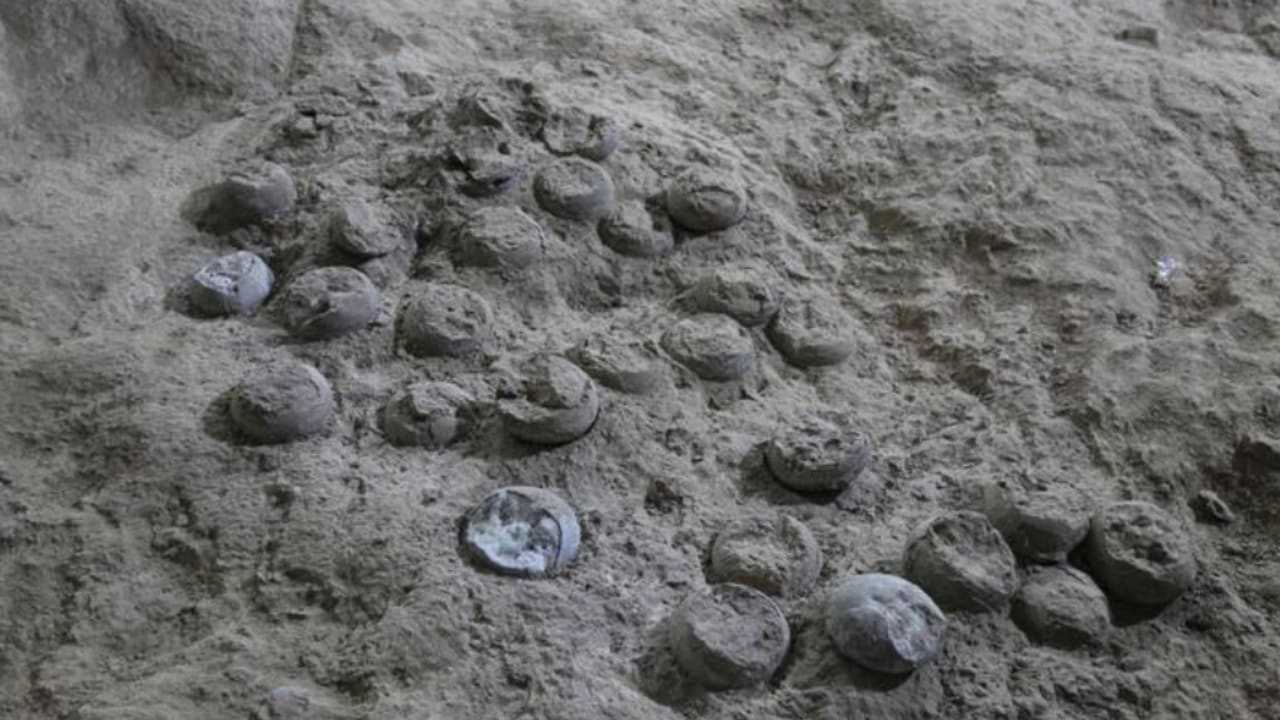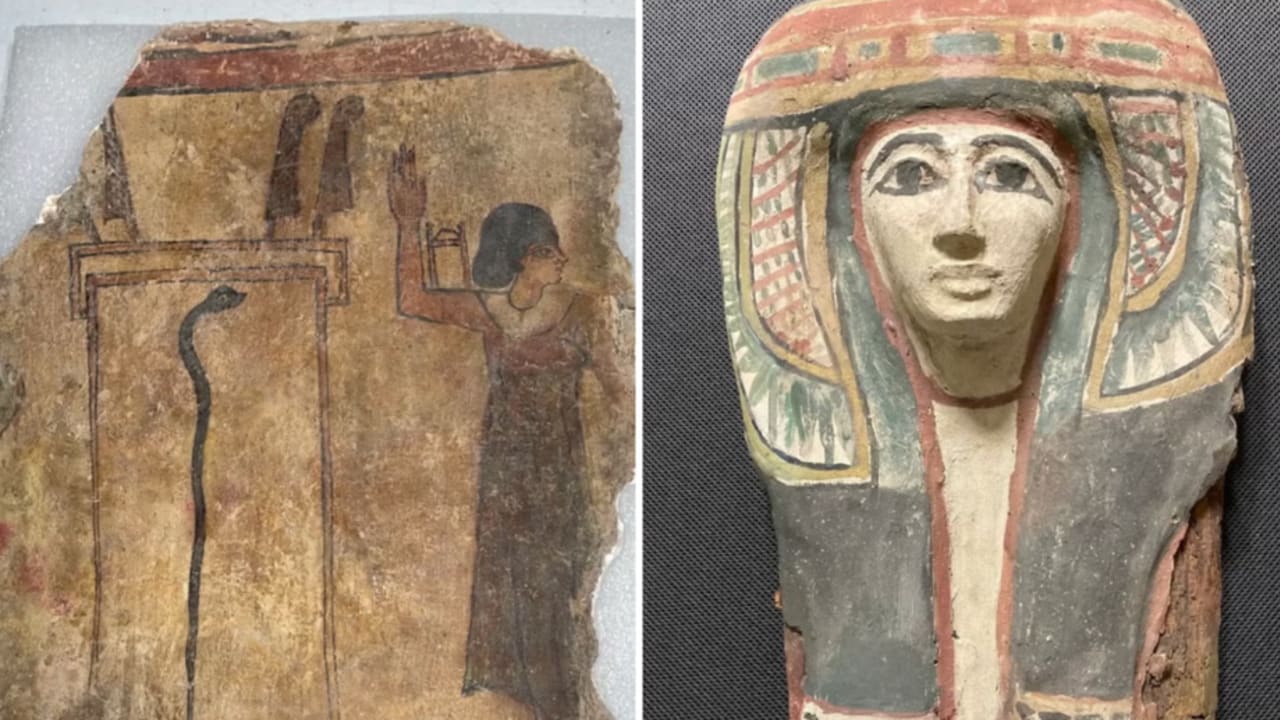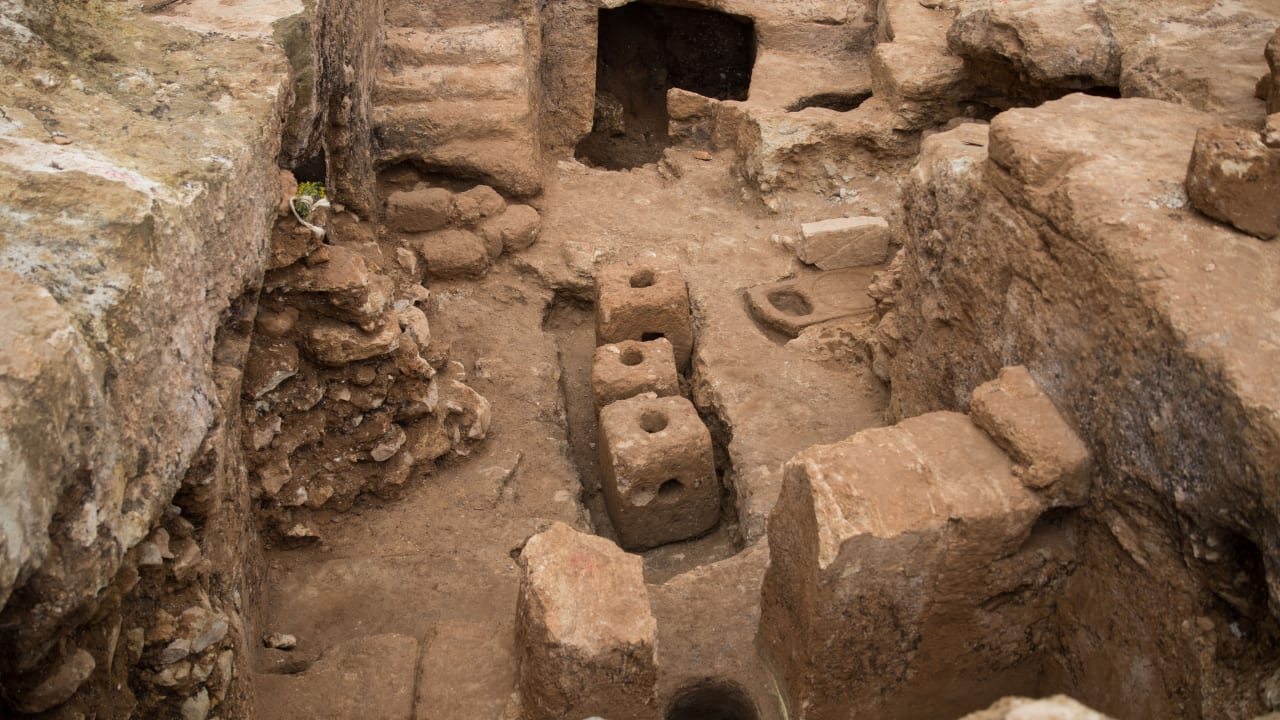ByJERUSALEM POST STAFF
Chinese researchers directly date dinosaur eggs using new carbonate uranium-lead method
Researchers in China achieved a milestone by directly dating a fossilized dinosaur egg at 85.9 million years old, marking a first in paleontology. Using carbonate uranium-lead (U-Pb) dating, scientists precisely determined the age of the egg, which originated from the Late Cretaceous epoch - a period characterized by global cooling. This achievement addresses uncertainties surrounding the age of dinosaur fossils and provides a more reliable method for establishing chronological timelines, as reported in Nature.
The dinosaur egg was uncovered at the Qinglongshan site in the Yunyang Basin, a region notable for the spread of more than 3,000 fossilized eggs across three locations. The egg in question is from a cluster of 28 found in a nesting area in Shiyan, China, embedded within breccia-bearing siltstone. Using a micro-laser, researchers vaporized carbonate minerals in the eggshell, generating aerosols containing lead and uranium atoms. This process enabled them to use the decay of uranium to lead as an atomic clock to ascertain the egg's age. “Since uranium decays into lead at a fixed rate, we were able to calculate the age by measuring accumulated lead - it’s like an atomic clock for fossils,” explained Dr. Bi Zhao, a researcher at the Hubei Institute of Geosciences, according to Science Daily.
Traditional methods of dating dinosaur fossils often rely on examining volcanic rock, ash layers, or surrounding minerals, which could lead to discrepancies due to the potential for these rocks to form before or after the eggs were laid. The indirect nature of these methods posed challenges in accurately determining the age of the fossils, making the direct dating of the egg a step forward in paleontology. “We provide the first robust chronological constraints for these fossils, resolving long-standing uncertainties about their age,” noted Zhao.
The Qinglongshan site maintained the integrity of its fossils, with minimal deformation observed due to the embedding of the eggs in rocks. These findings mark the first instance of reliably dated fossils from the site, enhancing the ability to establish global dinosaur egg chronologies. The researchers emphasize that the U-Pb dating method not only offers an accurate dating of the eggs but also enables scientists to construct detailed timelines of dinosaur existence and migration patterns.
“To the best of our knowledge, this is the first time that in situ isotopic ages have been reported for dinosaur eggshells both in China and, very likely, worldwide,” said Xing Cheng, a geologist at the Chinese Academy of Science in Xi'an and co-author of the study. Future plans involve expanding the sampling to encompass eggs from different rock layers, potentially allowing the construction of a regional timeline. Additionally, the team is considering examining Dendroolithid eggs from neighboring basins to trace dinosaur migrations.
This research holds implications for understanding dinosaur evolution and extinction. It provides insight into environmental changes on Earth during the Late Cretaceous, a time when the planet transitioned from a warmer to cooler climate, likely affecting dinosaur diversity. The team, led by Zhao, is optimistic that these findings will transform fossils into compelling narratives about Earth's history and the life forms that once roamed the planet.






.jpg)














